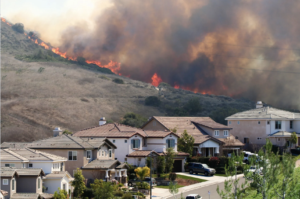
Fire season is around the corner, and with warming climates, it arrives earlier every year. If you live in fire-prone areas or the Wildland-Urban Interface (WUI), it’s crucial to be prepared and take steps to protect yourself and your loved ones from wildfires. Managing your trees and creating defensible space can significantly reduce wildfire risks. By doing so, you can become part of a Firewise Community and enjoy its many benefits. Here’s what you need to know about Firewise Communities and how proactive tree care can help you!
What Does It Mean to Be a Firewise Community?
A Firewise Community is a neighborhood or group that takes proactive measures to reduce wildfire risks. Recognized by the National Fire Protection Association (NFPA) through the Firewise USA program, these communities work together to implement fire-resistant landscaping, maintain defensible space, and educate residents on fire safety. The goal is to minimize the chances of wildfires spreading and protect homes, infrastructure, and landscapes.
Benefits of Firewise USA
Becoming a Firewise USA community comes with major advantages, including:
- Lower wildfire risk: Communities that implement Firewise principles have reduced damage from wildfires.
- Insurance discounts: Save money! Many insurance providers offer discounts to Firewise communities.
- Increased property value: Homes in well-maintained, fire-resilient communities often boast higher property values.
- Community safety and awareness: Firewise communities promote education, preparedness, and collaboration, making the neighborhood safer for everyone.
What Does It Take to Become a Firewise Community?
Becoming a Firewise Community involves strategic planning and active participation from residents. The Firewise USA program outlines key steps to achieve certification and maintain fire safety in your community
Key Steps to Achieve Firewise USA Certification
1. Form a Board or Committee:
- Establish a group of community members who will lead the Firewise initiative.
- Work with local fire departments, forestry agencies, and other experts to guide the process.
2. Obtain a Wildfire Risk Assessment:
- Conduct a wildfire risk assessment with help from local fire professionals.
- Identify vulnerable areas, hazardous vegetation, and other fire risks in the community.
3. Develop an Action Plan:
- Based on the risk assessment, create a tailored action plan to reduce wildfire threats.
- The plan should include defensible space creation, vegetation management, and community education.
4. Host an Educational Outreach Event:
- Organize an annual Firewise event to educate residents about wildfire prevention.
- Activities may include tree trimming demonstrations, emergency preparedness drills, or expert presentations.
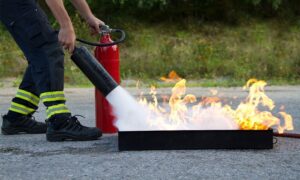
5. Invest in Community Fire Mitigation Efforts:
- Each household in the community must contribute volunteer hours or funds toward fire mitigation projects.
- Activities may include clearing brush and creating defensible spaces around homes.
6. Apply for Firewise USA Recognition:
- Submit the completed action plan and documentation of community efforts to the Firewise USA program.
- Once approved, maintain Firewise status by continuing annual fire mitigation efforts and education.
Managing Trees in Firewise Communities
Trees are an integral part of any landscape, providing shade, beauty, and environmental benefits. However, in fire-prone areas, proper tree management is necessary to reduce wildfire risks. Firewise Communities follow specific guidelines to make sure trees are maintained to enhance safety while preserving their ecological value. Key tree management practices include defensible space and fire-resistant landscaping.
CAL FIRE Defensible Space Requirements
Defensible space is a buffer zone around your home that helps slow or stop the spread of wildfires. CAL FIRE requires homeowners to:
- Maintain a 100-foot defensible space around structures.
- Keep tree canopies at least 10 feet apart to prevent fire spread.
- Remove dead or dying trees, brush, and other flammable vegetation.
- Trim tree branches at least 6 feet above the ground to reduce ladder fuels.
- Regularly clear leaves, pine needles, and debris from roofs, gutters, and decks.
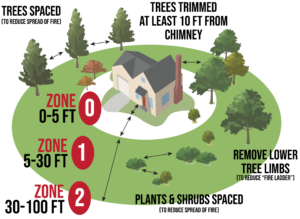
Fire-Resistant Landscaping
A well-planned landscape can significantly reduce fire risks. Fire-resistant landscaping includes:
- Planting low-flammability vegetation like succulents and hardwood trees instead of highly combustible plants like junipers and pines.
- Using non-combustible mulch such as gravel instead of wood chips near structures.
- Creating fuel breaks with rock pathways, driveways, or irrigated lawns.
- Regularly watering and maintaining plants to prevent excessive drying.
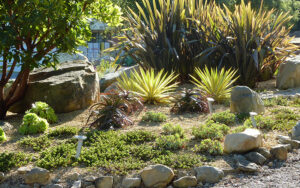
Firewise Tree Services
Need help making your property Firewise? We’ve got you covered! Our team is:
- Fully licensed and insured
- TCIA-accredited
- Staffed with ISA Certified Arborists
- Listed as an approved vendor by the California Fire Safe Council
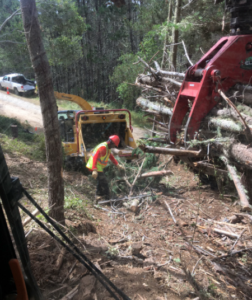
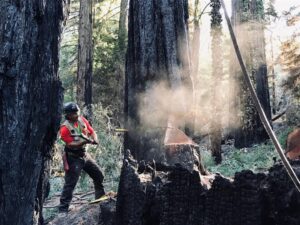
We specialize in defensible space creation, hazardous tree removal, and vegetation management. Our expert team can help safeguard your home and community against wildfires. Contact us today to schedule an assessment and take the first step toward becoming Firewise!





